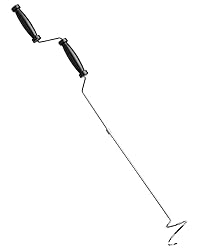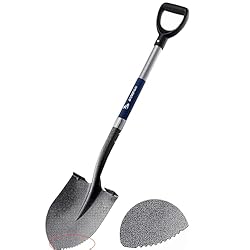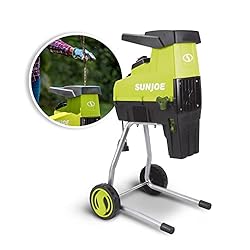There are several materials used in preparation and making of compost. These materials are essential and vital in compost making. Some of these materials are explained below:
Compost Aerator

A compost aerator is a tool which helps to sift through and aerate the contents in a compost bin. With a compost aerator, you achieve a quicker and cleaner aeration process.
A traditional method of aerating your compost involves the use of a pitchfork. The best types of compost aerators are made of treated steel, or aluminium, for them not to rust, possess soft handles for a comfort grip, and will not break easily.
Examples of compost aerators include: lotech corkscrew aerator, heavy duty-lotech corkscrew aerator, yard butler auger, etc.
Compost Bin

A compost bin is a container into which your organic waste is placed to turn into compost over time. Certain bins are continuous, meaning one can keep adding waste into them, while others create batches of compost with a set mix of ingredients added at once.
These bins are open on the bottom and set directly on the ground. Examples of compost bins include: compost tumblers, beehive composters, worm composers, etc.
Shovel/Spade

These are used for digging the compost and moving dirt, likewise, turning of the compost. A spade can be used in place of a shovel.
A spade has a sharp, pointed-blade and is used for digging the compost. As for a shovel, it can be in form of a rounded-blade or a pointed-blade.
A Living Composter

This is also known as worm composter or vermicomposter. They use red wriggler or nightcrawlers to break down the organic materials and the result is a faster pile.
As for a vermicompost bin, it produces more worms and compost and so, is also a quickly scalable operation.
Compost Grinder

Compost grinder is very much ideal for and used in large or exra-large compost piles and the speed and efficiency of decomposition can be significantly improved with a motorized compost grinder.
Compost grinders can be gas or electric powered and they help to mince large pieces of your compost materials as well as large piles of leaves into small chunks which can be easily consumed by the microbes present in your compost. Examples include: electric leaf shredders, small wood chippers, etc.
Compost Spreader
They are used for spreading compost and are mostly used in large yards. As for a small yard, the compost can be spread using a hand-powered fertilizer or seed spreader.
Many newer versions of this equipment can also help grind your compost.
Compost Tumblers

Compost tumblers use simple gear and lever engineering to enable you to turn your compost without the need for compost forks or shovels. These tools store your compost at an elevation.
They come in different sizes with different features. Some tumblers also come with screened size sections to promote air flow through your pile and for maintain the right moisture level.
Green and Brown Wastes
These are like the ingredients of a compost. Greens are rich in nitrogen while Browns are rich in carbon or carbohydrates.
Greens help to heat a compost pile up and help in the microorganisms in the pile to grow and multiply faster.
For the Browns, they serve as food sources for the microbes, help to add bulk, and also, allows air to filter through the pile.
What are the examples of Green materials?
Examples of Green materials are grass clippings, vegetable scraps, coffee grounds, tea bags, etc.
What are the examples of Brown materials?
Examples of Brown materials are: sawdust, newspaper, dry leaves/flowers, etc.
Is urine good for composting?
Yes, it is. Urine is very high in nitrogen and can be considered a ‘Green’ material.
Conclusion
The above materials are essential and required in composting processes.

